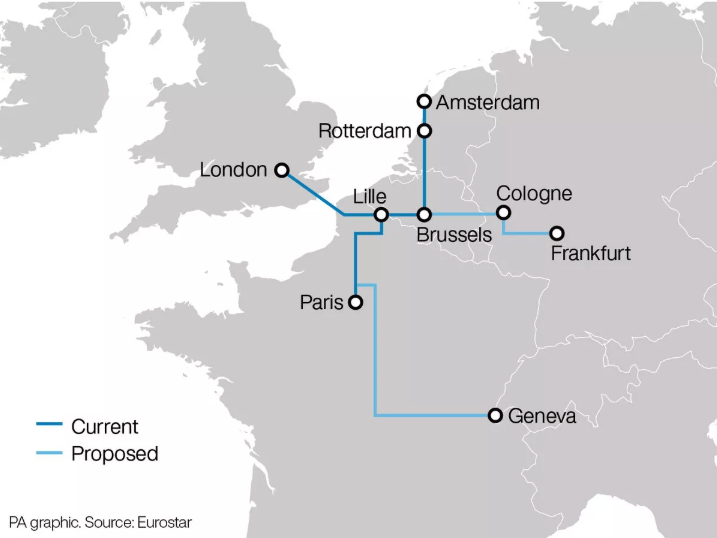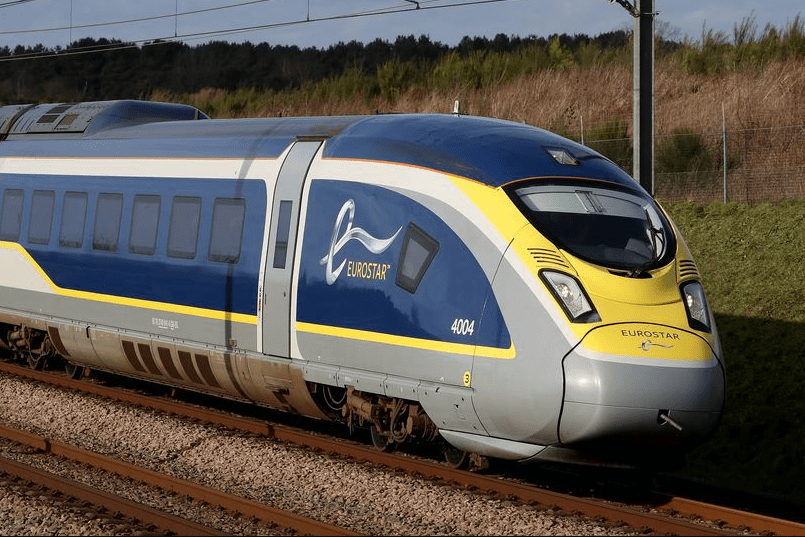Eurostar has announced ambitious plans to launch direct train services from London to Germany and Switzerland, signalling a major step in expanding international rail travel.
The operator revealed proposals for new routes to Frankfurt and Geneva beginning in the early 2030s. These additions are part of a broader investment in sustainable, long-distance rail options for both business and leisure travellers across Europe.
To support the expansion, Eurostar is set to invest around €2 billion (£1.7 billion) in a brand-new fleet of up to 50 trains. These high-speed services would link London St Pancras to Frankfurt in roughly five hours and to Geneva in about five hours and 20 minutes.
Exact stop locations, such as a potential stop in Cologne, and boarding options along the route are still under discussion.
Eurostar CEO Gwendoline Cazenave spoke about the motivation behind the move: “Many passengers are prepared to take longer train journeys rather than flying as they want to travel more sustainably.”
Both Frankfurt and Geneva are considered key financial centres, and Eurostar anticipates strong demand for direct access from the UK. The company expects the blend of professional and holiday travel to help fill carriages.
Still, challenges lie ahead. Ms Cazenave acknowledged that: “Opening new international train routes requires time, investments, expertise, a huge amount of energy, and partnerships.”
Despite the complexity, she expressed full confidence in the project, citing strong interest from governments, passengers, and Eurostar itself.
The development requires significant infrastructural upgrades. New border controls, track access agreements, and space allocation at stations in Germany and Switzerland are critical hurdles that Eurostar must overcome.
A recent memorandum of understanding between the UK and Switzerland has laid the groundwork for such cross-border rail cooperation, paving the way for future services.
Once the new fleet is operational, Eurostar will increase its total number of trains from 67, adding to its 17 existing e320s. This 30% fleet expansion will allow not only new services but also enhancements to current routes:
- London–Paris: Increasing daily returns from 17 to 20
- London–Amsterdam: Adding a fourth daily return from 9 September, and a fifth from mid-December

Currently, Eurostar connects London with Paris, Brussels, Amsterdam, and the French Alps during ski season. It also operates services within France, Belgium, the Netherlands, and Germany.
In 2024, Eurostar carried 19.5 million passengers, a 5% rise from 2023. London–Paris remained the top performer with 280,000 travellers, followed by London–Brussels (250,000), Paris–Brussels (160,000), and Paris–Netherlands (140,000).
Ms Cazenave remains optimistic: “We’re seeing strong demand for train travel across Europe, with customers wanting to go further by rail than ever before and enjoy the unique experience we provide.”
“Our new fleet will make new destinations for customers a reality – notably direct trains between London and Germany, and between London and Switzerland for the first time. A new golden age of international sustainable travel is here.”
Eurostar’s monopoly over Channel Tunnel passenger services is facing potential disruption. New players including Virgin Group, FS Italiane Group, and Gemini Trains, chaired by Labour peer Lord Berkeley, are reportedly exploring entry into the market.
In 2024, Eurostar’s revenue climbed 2.0% to €2.0 billion, with underlying earnings reaching €346 million (£292 million). The company also refinanced bank debt, reducing its liabilities from €963.7 million to €650 million (£549 million).
Although Eurostar is majority-owned by France’s SNCF, the UK government sold its stake in 2015 for £757 million.






